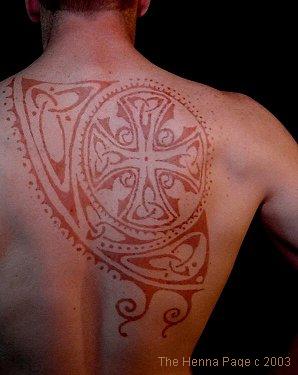The Encyclopedia of Henna
Stratum
Corneum:
Why are there
places
where the henna stain never gets dark and disappears fast?
Catherine
Cartwright-Jones
c 2003
Kent State
University
 Very thin stratum corneum will never take henna stain as well as very
thick
stratum corneum. In thin areas of stratum cornum, cells go quickly from
being living, flexible skin cells to shedding from the surface as dead
cells. These cells do not have time to become corneated.
Your
eyelid has a very thin layer of stratum corneum, and that skin is soft
and flexible. Your heel has a very thick layer of stratum corneum
and that area becomes hard and dry. Your heels may be highly
corneated.
Henna does not stain thin, moist, living tissue well. It stains
hard,
thick, dry, dead, corneated cells. Therefore, henna will never stain
dark,
or last long on areas of thin stratum corneum.
Very thin stratum corneum will never take henna stain as well as very
thick
stratum corneum. In thin areas of stratum cornum, cells go quickly from
being living, flexible skin cells to shedding from the surface as dead
cells. These cells do not have time to become corneated.
Your
eyelid has a very thin layer of stratum corneum, and that skin is soft
and flexible. Your heel has a very thick layer of stratum corneum
and that area becomes hard and dry. Your heels may be highly
corneated.
Henna does not stain thin, moist, living tissue well. It stains
hard,
thick, dry, dead, corneated cells. Therefore, henna will never stain
dark,
or last long on areas of thin stratum corneum.
The thinnest areas of stratum corneum are:
Foreheads, eyelids, cheeks, noses, lips, ears, penises, scalps and
necks.
These areas have, on average, 6 to 12 cell layers of stratum corneum.
Henna stains in these areas last a few days to a week and will never
be very dark.
Medium areas of stratum corneum are:
Shoulder, chest, back, buttock, back, belly, and upper arm.
These areas have, on average, 12 to 14 cell layers of stratum corneum.
Henna stains in these areas will last 7 to 10 days, and may have medium
rusty color.
Thick areas of stratum corneum are:
Thighs, lower legs and lower arms.
These areas have, on average, 14 to 18 cell layers of stratum corneum.
Henna stains will last 10 days to two weeks and may get to a chocolate
color.
Thicker layers of stratum corneum are:
"dorsum", backs, of hands, and "dorsum", tops, of feet.
These areas have, on average, 25 to 30 cell layers of stratum corneum.
Henna stains on the dorsum of hands and feet may get to a dark
chocolate color, and last nearly three weeks.
References:
"Number of Cell Layers of the Stratum Corneum in Normal Skin -
relationship
to the anatomical location on the body, age, sex and physical
parameters"
Zhen Ya-Xian, Takaki Suetake, Hachiro Tagani
Archive of Dermatology Research, 1999, Issue 291: 555-559;
Springer-Verlag,
1999
"Skin, the Human Fabric"
Doug Podolsky, US News Books, Washington DC, 1982
Back to Stratum
Corneum Index
Back to The
Science of Henna and Skin Index
Back to The
Encyclopedia of Henna Index
Can't find what you're
looking
for? Try:
The Henna Page Main
Index
http://www.hennapage.com/henna/mainindex.html
*"Henna,
the
Joyous Body Art"
the Encyclopedia of
Henna
Catherine
Cartwright-Jones
c 2000
registered with the
US Library
of Congress
TXu 952-968
|
